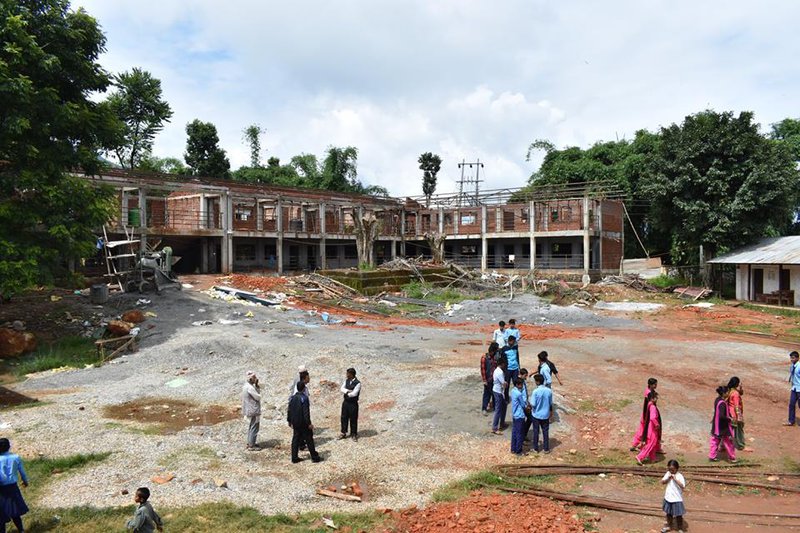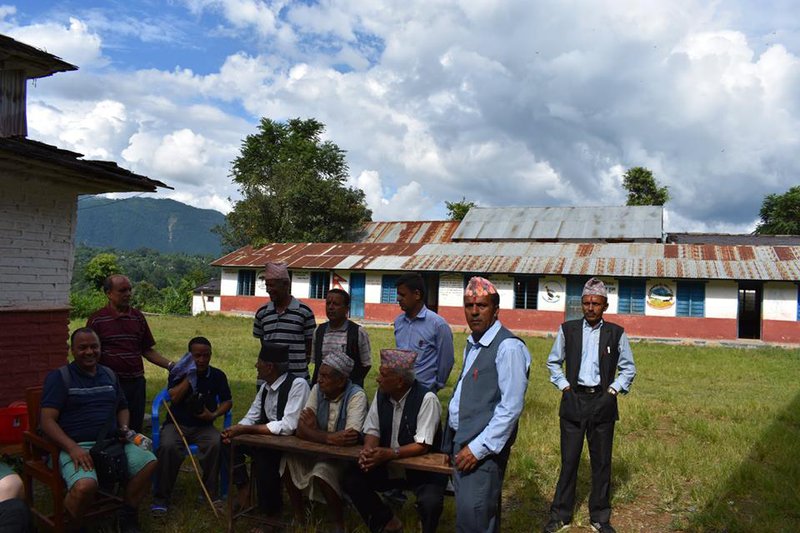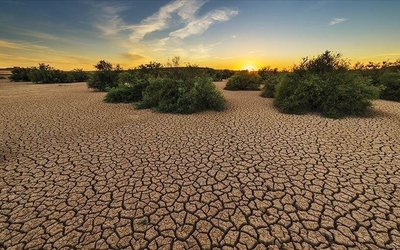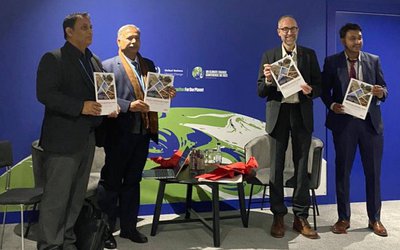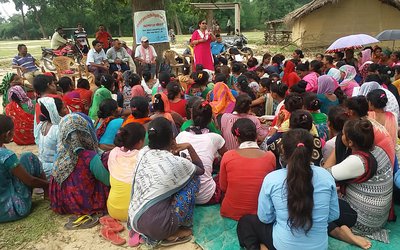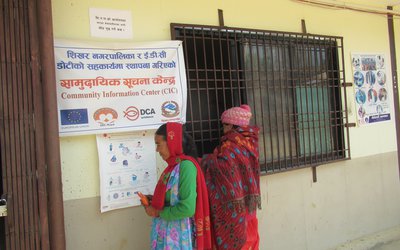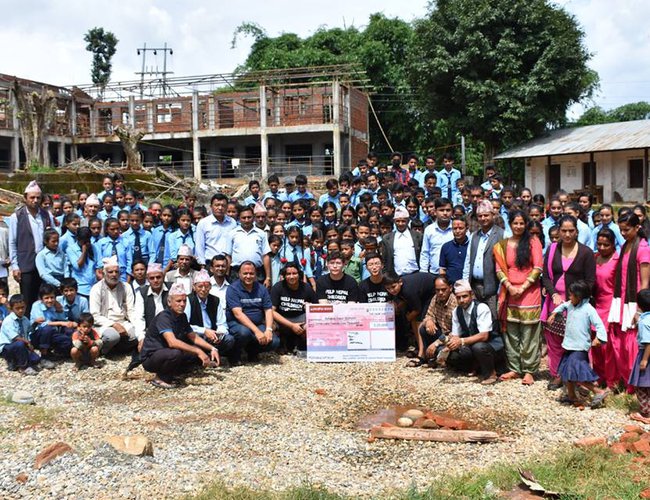
Doing our best to avoid the numerous motorcycles weaving their way through the crowds of people, we made our way past medieval buildings. We were in Kathmandu, capital of Nepal, on our first day in the historic mountain nation.
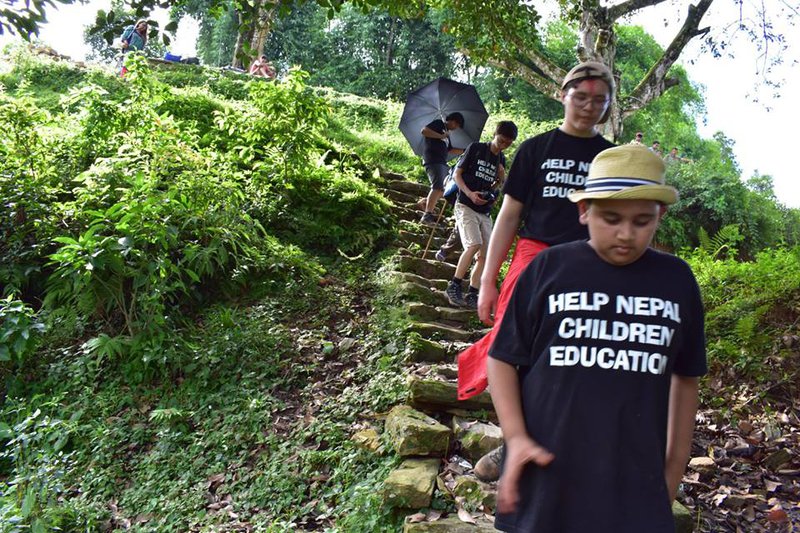
One of the most striking things to an outsider, new to the country, was the sheer number of temples and holy places. We were shocked to find out that Nepal was once home to more temples than houses and that there are more holy festivals than days in the year. However these statistics (of which the former is of somewhat dubious provenance) do no justice to the beauty and sheer aura conveyed by the temples in question. The Boudhanath Stupa is Asia’s largest stupa where Buddha’s painted eyes watch thousands of pilgrims from all across the world. Swayambhunath is a beautiful golden stupa shining on top of a hill that offers a panoramic view of the Kathmandu valley. Despite damage from the earthquake, it still maintains an aura of magnificence and is still home to numerous mobs of unruly monkeys.
The Kathmandu valley was home to three medieval city states: Bhaktapur, Kathmandu and Lalitpur. Each contains a historic durbar square and each was hit badly by the recent 2015 earthquake. Scars from the earthquake are still visibly clear, yet the charm, culture and architecture that make these areas unique.
Before heading to Baglung we stayed in Pokhara. A touristic city nestled alongside Phewa lake, Pokhara was a welcome break from the dust and bustle of Kathmandu. Looking down across the city from a lush, misty hilltop was the Shanti Stupa, one of eighty pagodas built as a symbol of peace. In addition, the lush hills that surround Pokhara are home to numerous adventure activities that draw tourists from around the world. The most popular of these activities is Paragliding which gives a literal bird’s eye view of the valley. As well as paragliding, Sandesh and our friend Alex did bungee jumping. A nerve-wracking wait preceded the final jump. Tension racked up as each preceding individual jumped off the platform, 70m of free-fall towards the ground. When Sandesh’s turn came, adrenaline pumped through his body as he was clipped on and pushed off. 3 seconds of free fall felt like an eternity. Upon reaching the bottom, the elastic bungee cord went into action, yanking him upwards before finally setting above the ground.
Unfortunately, Jonathan was unable to experience these once in a life time experiences due to eating contaminated food that afflicted him with food poisoning which hospitalised him. However he recovered in time to undergo one of the world’s longest and fastest zipwires, an exhilarating experience.
That wasn’t our only experience with Nepalese hospitals with one of Alex’s family friends being Dr Bishop of the Kanti Children’s Hospital. Dr Bishop’s selfless dedication to the children of Nepal in the face of financial and logistical adversity was truly inspiring and when visiting the numerous wards of the hospital, it really gave a great deal of perspective on the fortune of the universal healthcare provided by the NHS (National Health Service of Britain).
To the south of Nepal, straddling the border with India, is the verdant green Eden that is Chitwan National Park. Just weeks prior, the surrounding area had been devastated by a major flood which had taken at least 70 lives and damaged infrastructure. Fortunately for us, the floodwaters had subsided by the time of our arrival, but its many scars remained clear for us to see. Entering the national park via Sauraha, for residents of the rather barren UK, the sheer variety of wildlife there was stunning. From Kingfishers to Wild Boar and Python to Mugger Crocodiles, these sightings were topped by two encounters with the magnificent Indian Rhinoceros whose numbers have recovered well since the 1970’s when they were on the brink of extinction.
After a 4 hour long gruelling car journey up a boulder strewn muddy road, we finally reached Jyamire, Amalachaur, Sandesh’s father’s hometown. There we slept in a traditional Nepali house, an experience very different to the brick houses here. We even had to walk past a Buffalo Stable just to go to the toilet, where there wasn’t any electricity or running water. After an eventful night, we woke up in the morning to the monsoon and fresh buffalo milk, ready to start a long day.
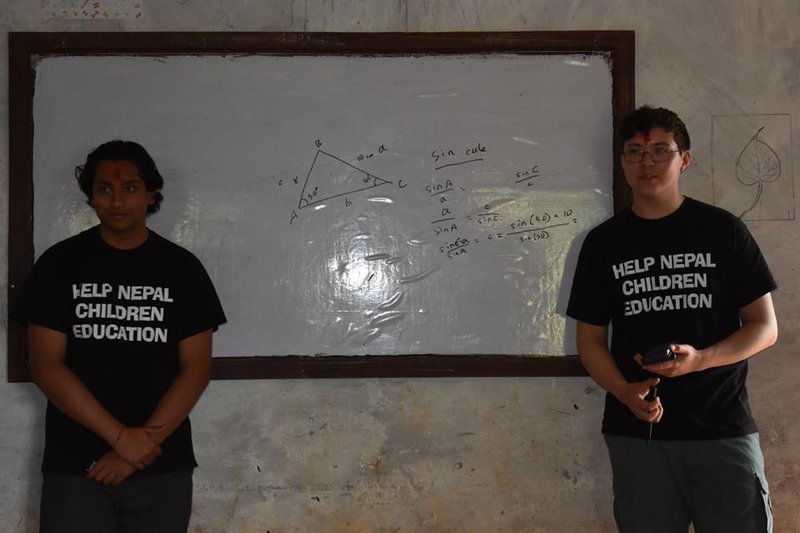
After a short hike, we arrived at the village school where we’d be handing 300,000 rupees that we had raised over the course of several months (through an online GoFundMe page, collections in our school and backpacking) to buy equipment for the school’s new science building. Upon our arrival, we were greeted by teachers, students and the Principal himself with floral necklaces and tika bindis. We even had the opportunity to teach classes of upper grade students Maths, English and Science. This gave us an interesting insight into Nepal’s education system and was a humbling experience to see the power of education, something we take for granted in the UK.
Due to Jonathan’s illness, we were unable to go trekking in Pokhara, one of Nepal’s quintessential attractions. However we made up for it by making the half day long trek from Jyamire down the hill to Kushma. Even though our trek isn’t likely to be found mentioned by tourism websites and travel agents, at every turn it offered brilliant views over the fertile valley. At the end of our short trek in Kushma, besides a steep river gorge, we were unexpectedly greeted to the Teej dance which we were invited to join in.
One of the highlights of our journey was a short flight out of Kathmandu. However what was special about this particular flight wasn’t the destination, but the journey. The flight was parallel to the Himalayas and one that would take us adjacent to Mount Everest, the tallest mountain in the world. Despite possessing an almost mythic reputation that had spawned tales of bravery and endeavour over the years, nothing could prepare us for its sight. Emerging far above the clouds, Everest’s majesty and beauty was truly unparalleled.
Our journey to Nepal was a once in a lifetime experience. From viewing the windswept peak of Everest to the lush jungles of Chitwan, the historic markets of Kathmandu valley to the numerous holy stupas, Nepal is a truly unique country. To top it off with the humbling experience of the charity work at the school and to contribute a tangible difference to others, left a bittersweet taste as we stepped on the plane back home.
